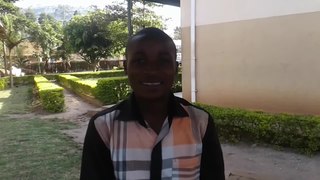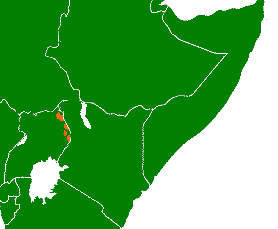 W
WUganda is a multilingual country. Forty-three of its living languages fall into four main families—Bantu, Nilotic and Central Sudanic—with another two languages in the Kuliak family. Of these, 41 are indigenous and 2 are non-indigenous. Furthermore, 5 are institutional, 27 are developing, 7 are vigorous, 2 are in trouble, and 2 are dying.
 W
WAcholi is a Southern Luo dialect spoken by the Acholi people in the districts of Gulu, Kitgum and Pader in northern Uganda. It is also spoken in South Sudan in Magwi County, Eastern Equatoria.
 W
WGujarati is an Indo-Aryan language native to the Indian state of Gujarat and spoken predominantly by the Gujarati people. Gujarati is part of the greater Indo-European language family. Gujarati is descended from Old Gujarati. In India, it is the official language in the state of Gujarat, as well as an official language in the union territory of Dadra and Nagar Haveli and Daman and Diu. As of 2011, Gujarati is the 6th most widely spoken language in India by number of native speakers, spoken by 55.5 million speakers which amounts to about 4.5% of the total Indian population. It is the 26th most widely spoken language in the world by number of native speakers as of 2007.
 W
WKiga is a Great Lakes Bantu language of the Kiga people (Bakiga). Kiga is a similar and partially mutually intelligible with the Nkore language. It was first written in the second half of the 19th century. Kiga is largely spoken in the ancient Kigezi region which includes about 5 districts, namely;Rubanda, Rukiga, Kabale, Kanungu and some parts of Rukungiri. As of 2021, Kiga is spoken natively by about 1.3 million people in Uganda.
 W
WKirundi, also known as Rundi, is a Bantu language spoken by some 9 million people in Burundi and adjacent parts of Tanzania and the Democratic Republic of the Congo, as well as in Uganda. It is the official language of Burundi. Kirundi is mutually intelligible with Kinyarwanda, an official language of Rwanda, and the two form part of the wider dialect continuum known as Rwanda-Rundi.
 W
WThe Kuliak languages, also called the Rub languages, are a group of languages spoken by small relict communities in the mountainous Karamoja region of northeastern Uganda.
 W
WKupsabiny (Sabiny), or Sebei, is a Kalenjin language of eastern Uganda.
 W
WThe Nilotic languages are a group of related languages spoken across a wide area between South Sudan and Tanzania by the Nilotic peoples.
 W
WSoo or So is the Kuliak language of the Tepes people of northeastern Uganda. The language is moribund, with most of the population of 5,000 having shifted to Karamojong, and only a few dozen elderly individuals are still able to speak Soo. Soo is divided into three major dialects: Tepes, Kadam (Katam), and Napak.
 W
WSwahili, also known by its native name Kiswahili, is a Bantu language and the native language of the Swahili people. It is one of two official languages of the East African Community (EAC) countries, namely Burundi, Kenya, Rwanda, South Sudan, Tanzania, and Uganda. It is a lingua franca of other areas in the African Great Lakes region and East and Southern Africa, including some parts of the Democratic Republic of the Congo (DRC), Malawi, Mozambique, Somalia, and Zambia. Swahili is also one of the working languages of the African Union and of the Southern African Development Community. The exact number of Swahili speakers, be they native or second-language speakers, is estimated to be between 50 million to 150 million.